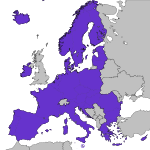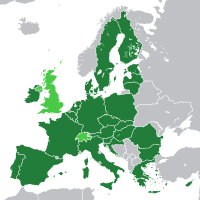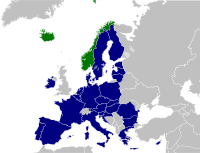Our website is made possible by displaying online advertisements to our visitors.
Please consider supporting us by disabling your ad blocker.
Federalisation of the European Union
| This article is part of a series on |
 |
|---|
|
|
There is ongoing discussion about the extent to which the European Union (EU) has already turned from a confederation (a union of sovereign states) into a federation (a single federal state with a central government, consisting of a number of partially self-governing federated states) over the course of decades, and more importantly, to what degree it should continue to evolve in a federalist direction. As of June 2024[update], the EU has no formal plans to become a federation.
Since the 1950s, European integration has seen the development of a supranational system of governance, as its institutions move further from the concept of simple intergovernmentalism and more towards a federalised system.[citation needed] However, with the Maastricht Treaty of 1992, new intergovernmental elements have been introduced alongside the more federal systems, making it more difficult to define the EU. The European Union, which operates through a hybrid system of intergovernmentalism and supranationalism, is not officially a federation or even a confederation – though most contemporary scholars of federalism view it as a federal system.[1]
- ^ Kelemen, R. Daniel. (2007). "Built to Last? The Durability of EU Federalism?" (PDF). Archived from the original (PDF) on 20 January 2013. In Making History: State of the European Union, Vol. 8, edited by Sophie Meunier and Kate McNamara, Oxford University Press, p. 52.
Previous Page Next Page










